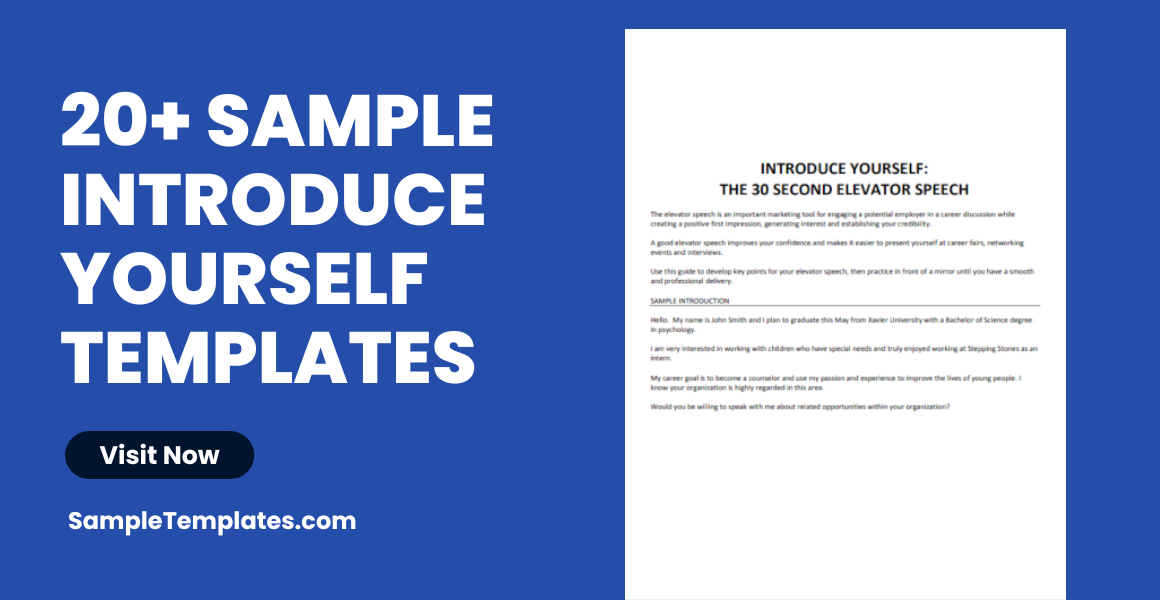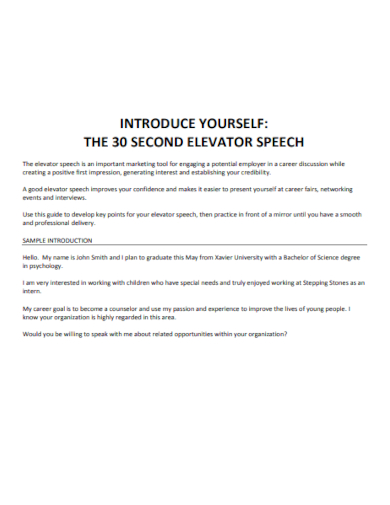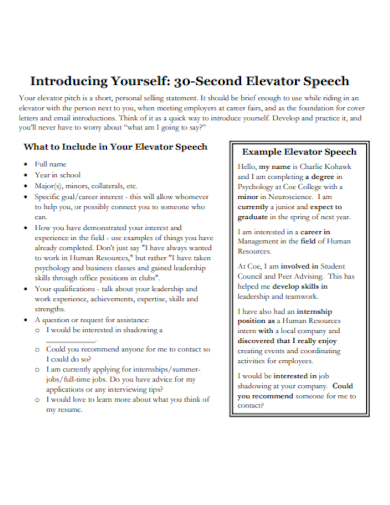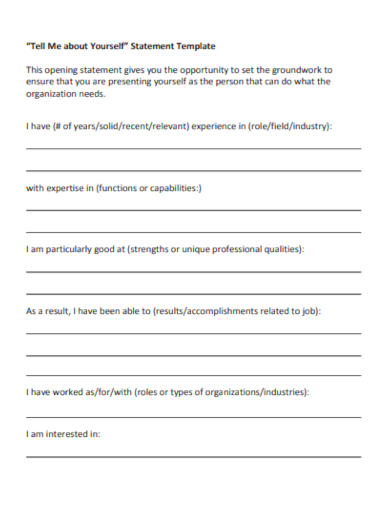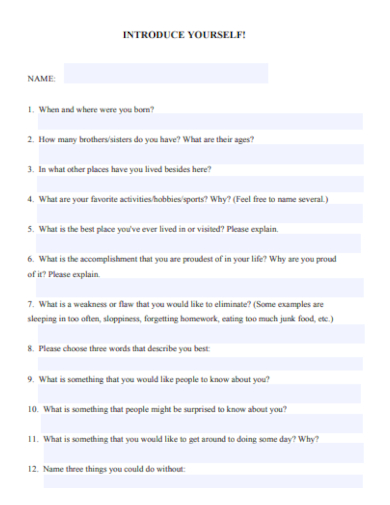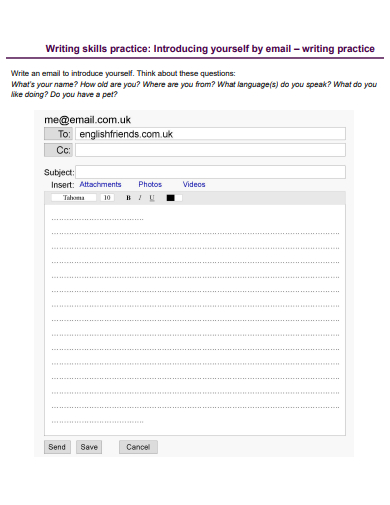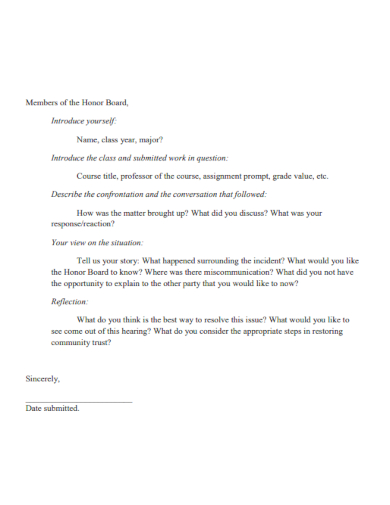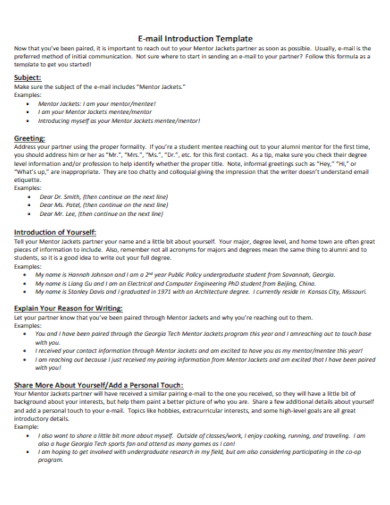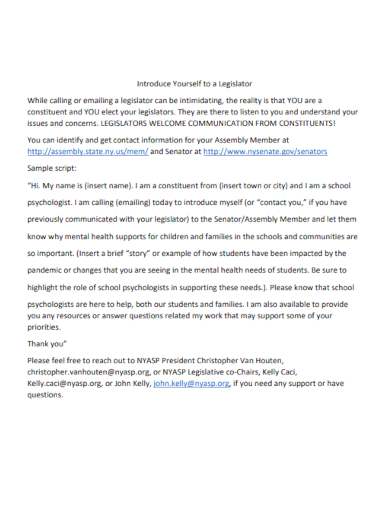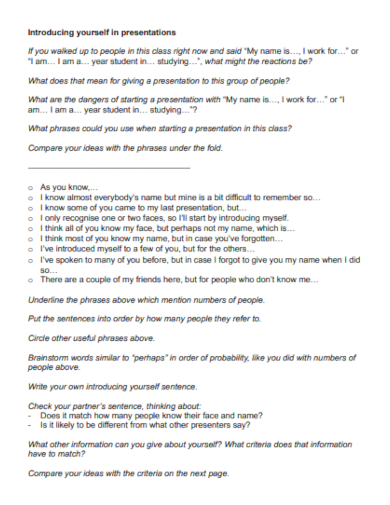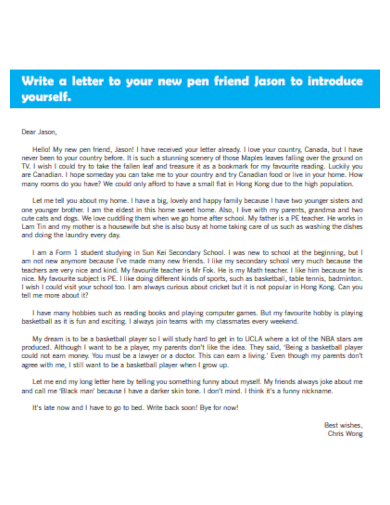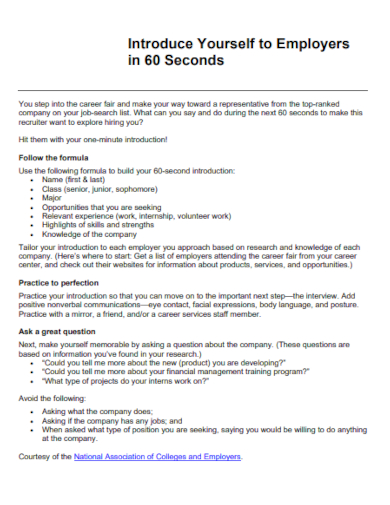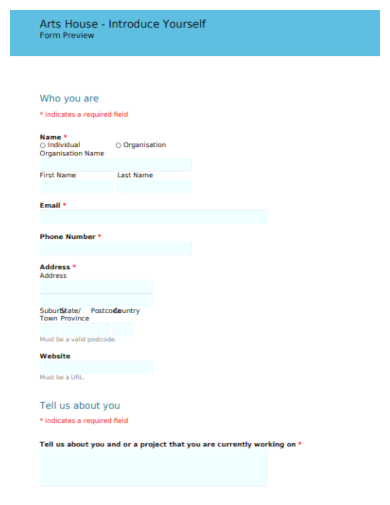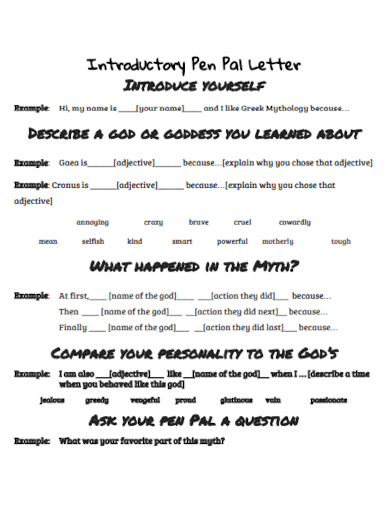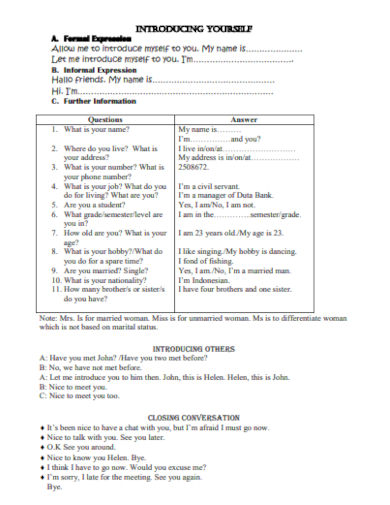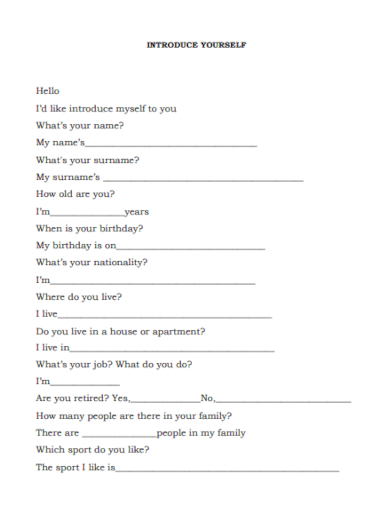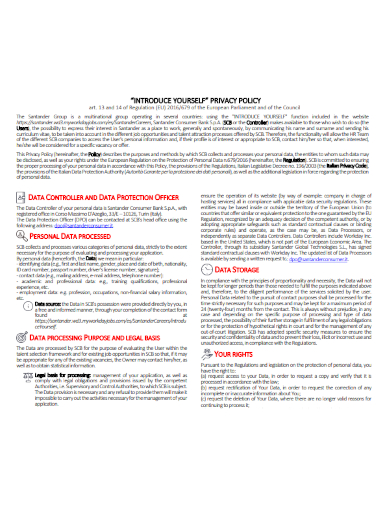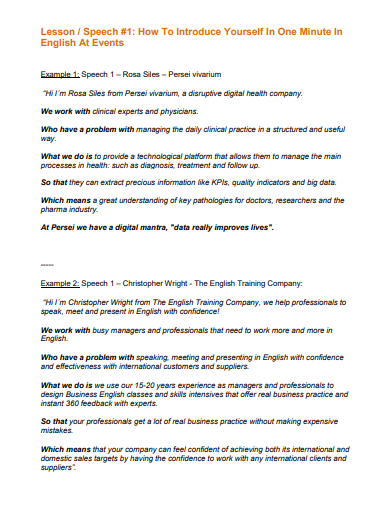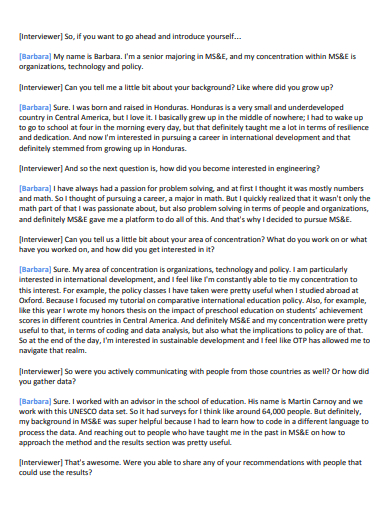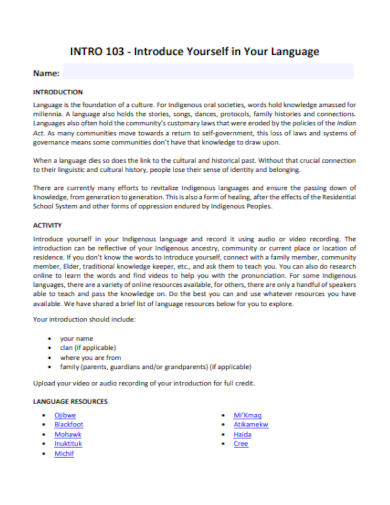Greetings! Allow me to introduce myself, I’m a dynamic professional driven by passion and expertise cultivated over years. My skill set spans Key Skills, and I’m dedicated to. I thrive on innovation and excellence, committed to delivering outstanding results. Let’s embark on a journey of collaboration and mutual growth. Together, we can harness our potential, achieve our goal list, and make a meaningful impact. Ready to explore the possibilities?
20+ Introduce Yourself Samples
1. Self Introduction Introduce Yourself
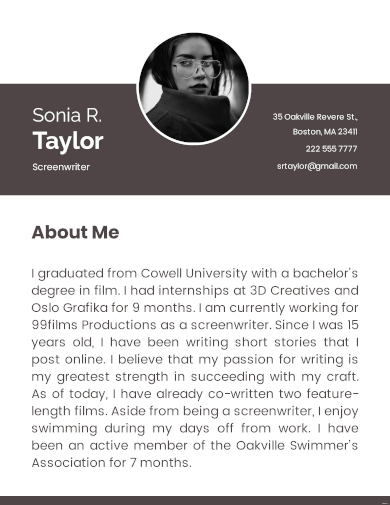
2. Introduce Yourself Speech
3. Introduce Yourself Elevator Speech
4. Tell Me About Yourself Statement
5. Simple Introduce Yourself
6. Introduce Yourself By Email
7. Creative Introduce Yourself
How to introduce yourself professionally?
Introducing yourself professionally is a crucial skill that can significantly impact your personal and career opportunities. Whether you’re in a job interview, attending a networking event, or meeting new colleagues, a well-crafted professional interview introduction sets the stage for positive interactions and leaves a lasting impression. Here’s a comprehensive guide on how to introduce yourself professionally:
1. Start with a Greeting: Begin your introduction with a polite greeting. Depending on the context, you can say, “Good morning,” “Good afternoon,” or simply “Hello.” This sets a positive tone and demonstrates courtesy.
2. State Your Name Clearly: After the greeting, clearly and confidently state your full name. Make sure your name is easily audible and understandable. A strong, confident delivery can make a significant impact.
3. Mention Your Professional Title or Position: Immediately convey your current job title or the role you hold in a professional context. This helps others understand your professional background and sets the stage for the conversation.
4. Provide a Brief Overview of Your Experience: Offer a concise overview of your relevant professional experience. Mention the number of years you’ve been in the field and any significant roles or achievements. This provides context for your expertise.
5. Share Your Educational Background: Mention your highest level of education, including your degree and the institution you attended. If your education is particularly relevant to your profession, you can briefly elaborate on it.
6. Describe Your Expertise and Skills: Highlight your key skills and areas of expertise. Focus on those that are most relevant to the context. For instance, in a job interview, emphasize skills that match the job requirements.
7. Express Your Career Goals: Articulate your professional aspirations. Explain what you hope to achieve in your current role or within the context of the conversation. Sharing your goals shows that you are forward-thinking and motivated.
8. Highlight Achievements: If applicable, share specific achievements or projects you’ve worked on that demonstrate your skills and accomplishments. Use quantifiable data when possible to showcase your impact.
9. Convey Passion for Your Work: Show enthusiasm for your work and industry. Express your commitment to continuous improvement and a genuine passion for what you do. Passion is contagious and can make you more relatable.
10. Tailor Your Introduction: Customize your introduction to the specific situation or audience. For example, in a job interview, emphasize your qualifications for the position. In a networking event, focus on how you can contribute to the industry or community.
11. Keep it Concise: Aim for brevity in your introduction. While it’s essential to convey relevant information, avoid overwhelming the listener with too much detail. A concise introduction is more memorable.
12. Practice and Refine: Practice your introduction to ensure it flows smoothly and confidently. Seek feedback from peers, mentors, or friends and refine it based on their suggestions.
13. End with a Call to Action: Conclude your introduction by inviting questions or further discussion. For instance, you can say, “I’d be delighted to learn more about your work as well” or “Let’s explore how we can collaborate.”
14. Maintain Professional Demeanor: Throughout your introduction, maintain professionalism in your demeanor. Maintain eye contact, speak clearly, and use appropriate body language.
15. Be an Active Listener: After introducing yourself, be an active listener. Pay attention to the other person’s response and engage in meaningful conversation based on their interests and needs.
In summary, introducing yourself professionally is a valuable skill that can lead to enhanced personal and career prospects. By following these guidelines, you can confidently introduce yourself in various professional settings, make a memorable impression, and open doors to new opportunities. Remember that practice and adaptability are key to mastering this skill over time.
8. Email Introduction of Yourself
9. Introduce Yourself As Advocate
10. Introduce Yourself To Legislator
11. Introduce Yourself in Presentation
12. Letter for Introduce Yourself
13. Introduce Yourself To Employer
14. Application of Introduce Yourself
15. Introductory Letter for Introduce Yourself
Why do good introductions matter?
Good introductions matter significantly in both personal and professional contexts. They serve as the initial point of contact in a conversation or interaction, setting the stage for how you are perceived and the quality of the subsequent engagement. Below are several reasons why good introductions are essential:
1. First Impressions Count:
First impressions are formed within seconds of meeting someone, and they often last. A well-executed introduction provides an opportunity to make a positive initial impression. It can create an immediate sense of trust, confidence, and professionalism, which can influence the course of the relationship.
2. Establishing Credibility:
A strong introduction is your chance to establish credibility and competence. By confidently articulating your qualifications, skills, and experience, you signal to others that you are knowledgeable and capable in your field. This credibility can be particularly important in professional settings, such as job interviews or business meetings.
3. Building Rapport:
An effective introduction helps build rapport and fosters a sense of connection between you and the person you are meeting. When you introduce yourself with warmth, authenticity, and respect, you are more likely to create a positive and receptive atmosphere for the conversation that follows.
4. Networking Opportunities:
In networking events, conferences, or social gatherings, a good introduction can open doors to new opportunities. It piques the interest of others and encourages them to engage with you. A well-crafted introduction can lead to valuable connections, collaborations, partnerships, or even job offers.
5. Career Advancement:
In professional settings, such as job interviews or meetings with colleagues, a strong introduction can set you apart from others. It provides a platform to showcase your qualifications and aspirations. A compelling introduction can lead to career advancement opportunities, promotions, or endorsements.
6. Effective Communication:
Effective communication is built on clear and concise introductions. A well-structured introduction conveys essential information about who you are, your background, and your objectives, making it easier for others to understand and engage with you.
7. Confidence Boost:
Crafting and delivering a strong introduction can boost your confidence. When you feel well-prepared to introduce yourself, you are more likely to feel at ease during the conversation that follows. Confidence is contagious and can positively affect how others perceive you.
8. Networking and Relationship Building:
In social and professional circles, good introductions are the foundation of networking and relationship building. They initiate conversations that can lead to long-lasting connections, collaborations, and friendships.
9. Making a Lasting Impression:
A memorable introduction can help you stand out in a crowded field. People are more likely to remember you and your key qualities when you introduce yourself effectively. This can be particularly valuable in competitive environments.
10. Effective Time Management:
In professional contexts where time is limited, a concise and informative introduction can help maximize the efficiency of conversations. It ensures that both parties quickly understand each other’s backgrounds and objectives, facilitating more productive discussions.
In conclusion, good introductions matter because they set the tone for positive interactions, establish credibility, and open doors to opportunities. Whether in personal or professional situations, a well-crafted introduction can significantly impact the course and outcomes of conversations and relationships. Investing time and effort in mastering the art of introductions can yield substantial benefits in various aspects of life.
16. Introduce Yourself Format
17. Blank Introduce Yourself Template
18. Introduce Yourself Privacy Policy
19. Introduce Yourself in Lesson Speech
20. Introduce Yourself To Interviewer
21. Editable Introduce Yourself Template
How to create a great self-introduction?
Creating a great self-introduction is a valuable skill that can leave a lasting impression in various personal and professional situations. A well-crafted self-introduction should be engaging, concise, and tailored to the context. Here’s a comprehensive guide on how to create a great self-introduction:
1. Understand the Context:
Before crafting your self-introduction, consider the context in which you’ll be delivering it. Are you at a job interview, a networking event, a social gathering, or a professional conference? Tailor your introduction to the specific situation and audience.
2. Start with a Greeting:
Begin your self-introduction with a polite and friendly greeting. Depending on the situation, you can use greetings like “Good morning,” “Hello,” or “Hi.” This helps establish a positive and approachable tone.
3. State Your Name Clearly:
Clearly and confidently state your full name. Make sure your name is easily audible and understandable. This is the first step in helping others remember you.
4. Provide a Brief Overview of Your Background:
Share relevant information about your background. Mention your current position, job title, or field of study. If applicable, briefly discuss your professional experience or educational background.
5. Highlight Key Skills and Expertise:
Highlight a few key skills, strengths, or areas of expertise that are relevant to the context. Choose qualities that make you stand out or align with the interests of your audience.
6. Mention Your Achievements:
Share notable achievements or experiences that showcase your capabilities. These could be accomplishments at work, academic achievements, or personal milestones that demonstrate your skills and dedication.
7. Express Your Passion and Goals:
Convey your enthusiasm for what you do or your field of interest. Share your long-term goals or aspirations to give others insight into your motivations and ambitions.
8. Personalize for the Audience:
Customize your self-introduction to cater to the interests and needs of your audience. In a professional setting, focus on aspects of your background that are most relevant to the job or industry. In social situations, share personal interests or hobbies that may foster connections.
9. Keep It Concise:
A great self-introduction should be concise and to the point. Aim to deliver your introduction in about 30-60 seconds. Avoid overwhelming the listener with too much information.
10. Practice and Refine:
Practice your self-introduction to ensure it flows smoothly and confidently. You can rehearse in front of a mirror, record yourself, or seek feedback from trusted friends or mentors. Refine it based on their input.
11. End with a Call to Action:
Conclude your self-introduction by inviting questions or further discussion. For example, you can say, “I’d love to hear more about your work as well,” or “Let’s connect and explore potential collaborations.”
12. Maintain Eye Contact and Positive Body Language:
When delivering your self-introduction in person, maintain eye contact, stand or sit up straight, and use positive body language. This demonstrates confidence and engagement.
13. Be Authentic:
Above all, be authentic and genuine in your self-introduction. People appreciate sincerity, and authenticity can help you build rapport and trust with others.
14. Adapt as Needed:
Be prepared to adapt your self-introduction based on the specific situation or feedback you receive. Different contexts may require slightly different versions of your introduction.
In summary, creating a great self-introduction is a skill that can greatly enhance your personal and professional interactions. By following these guidelines and practicing regularly, you can craft a compelling self-introduction that makes a positive impression and opens doors to meaningful connections and opportunities. Remember that confidence and authenticity are key to delivering a self-introduction that resonates with others.
Related Posts
Sample Business Card Templates
Sample Cashier Job Descriptions
Questionnaire Samples
FREE 10+ Sample HR Resource Templates in PDF
FREE 10+ HR Consulting Business Plan Samples in MS Word | Google Docs | Pages | PDF
FREE 49+ Sample Job Descriptions in PDF | MS Word
FREE 16+ Nonprofit Budget Samples in PDF | MS Word | Excel | Google Docs | Google Sheets | Numbers | Pages
FREE 13+ Academic Calendar Templates in Google Docs | MS Word | Pages | PDF
FREE 10+ How to Create an Executive Summary Samples in Google Docs | MS Word | Pages | PDF
FREE 23+ Sample Event Calendar Templates in PDF | MS Word | Google Docs | Apple Pages
Company Profile Samples
FREE 10+ Leadership Report Samples [ Development, Training, Camp ]
FREE 24+ Sample Payment Schedules in PDF | MS Word
FREE 10+ Return to Work Action Plan Samples in PDF | DOC
Autobiography Samples & Templates
